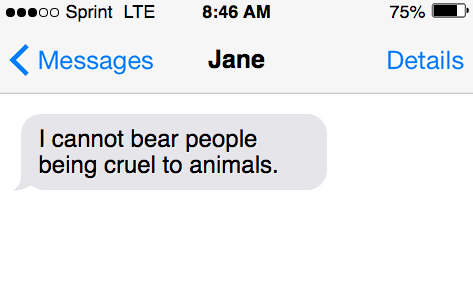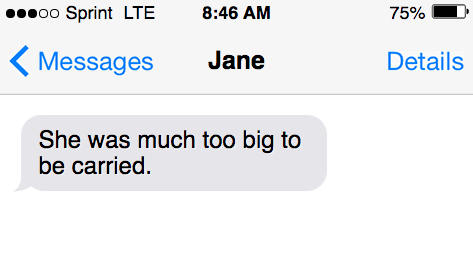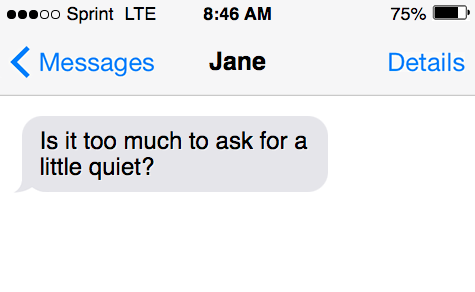These TWO words sound the same. They look almost identical. Although, do they mean the same things? If you are still debating when to use to vs too, read this guide that explains how, step-by-step.
To vs. too: what’s the difference?
To, too, and two are all homophones, which are words that sound the same (or are pronounced the same) though they have different meanings and spellings.
Of course, two spelled this way refers to the number or quantity of having ‘two’ of something. This spelling (two) should be easiest to know when to use, just think: am I referring to the number, or something else?
If it’s not the number, (the number that follows one, to be specific), then use the preposition to (or too, though the more common use is the former, as in the preposition).
To and too are two (see what I did there?) of the most commonly misused words in the English language ever. While they share almost the exact same spelling, other than the additional ‘o’, to and too are distinct words and mean different things in English.
Accordingly, and logically, they are used differently and in different contexts in writing. In conversation they sound the exact same, so verbally, it’s not a problem.
| Word | Definition |
| To (preposition) /to͞o,tə/ | expressing motion in the direction of (a particular location). |
| Two (number) /to͞o/ | equivalent to the sum of one and one; one less than three; 2. |
| Too (adverb) /to͞o/ | in addition; also. |
The basic difference between to and too in parts of speech is:
- To is a preposition,
- Too is an adverb.
How to use to
The word to is a preposition. To better understand this tricky and extremely common preposition, (to), let’s go over what prepositions do in writing on a broader level.
Prepositions are basically the glue of a sentence. They are linking words that connect parts of sentences together, and are extremely versatile and flexible parts of speech. They can be placed in various parts of sentences, and can function as adverbs, verbs or adjectives when combined with a base verb or simple word to form an infinitive.
As you’ll see from the list below, prepositions are perhaps the most frequently used words both in writing and everyday speech.

Take a look at each of the following words, which are all examples of prepositions:
- in
- at
- on
- to
- over
- above
- below
- underneath
- beneath
- by
- next to
- near
- inside
There are several types of prepositions, and each ‘type’ is organized by their function (in other words, what they do) in writing and communication, more generally.
Prepositions of place, for example, which includes words such as in, on, inside, at, over, above, next, etc., are smaller words that refer to a place, or the location of something or object in a sentence or speech.
For example:
- They will meet in the lunchroom.
- She was waiting at the corner.
- He left his phone on the bed.
- Place the pen inside the drawer.
To does some serious heavy-lifting as one of the most popular prepositions in English. The word to functions as a preposition of time, movement or destination. To in its prepositional form helps express direction, motion or to specify a destination.

When using words that express motion or movement, the correct word choice is most likely the preposition to. Action words like walk, run, jog, drive, hike, bike, and so forth, regularly use ‘to’ to form the to-infinitive.
See these sentences as examples:
- I am going to the store.
- She’ll be back later. She went to go for a run.
- She is going to school today.
- Are you going to McDonald’s?
- He has gone on vacation to France.
- She went to the bowling alley every Friday last summer.
- I will go to bed when I am tired.
- They will go to the zoo if they finish their errands.
To also directs or refers to the receiver of an action or verb in a sentence.
For example:
- She’s always writing letters to the local newspaper.
- She gave the keys to Sarah.
- I mailed the gift to my sister last Monday.
- I want to thank him for being so accommodating to my many requests.
- I’ll explain to you where everything goes.
- I am deeply grateful to my parents.
- Who did she address the letter to?
Example sentences from OxfordLearnersDictionaries.com
More examples:
To can be used to indicate a relationship between people, or places and things:
- She’s married to an Italian.
- The Japanese ambassador to France
- The key to the door
- The solution to this problem
To is used to describe when someone has been affected by something or someone else, for example:
- She is loyal to her dog.
- What have you done to your face?
To can be used to refer to a set time period, or a range between two things:
- Her train arrives at quarter to five.
- It’s ten to six. We’d better leave now or we’ll be late.
- I’d say he was 25 to 30 years old
- I like all types of music from funk to reggae.
To also forms part of the to-infinitive. To-infinitives are verb phrases or infinitive phrases that are made up of a base form of a verb, and a particle, such as to. When to is combined with a base verb, it forms an infinitive, or specifically a to-infinitive. It is now part of the verb, and can participate in sentences as such.

When the preposition ‘to’ combines with a base verb, the preposition gains superpowers through osmosis and can now perform functions in grammar such as a noun, adverb, or adjective. This is why it’s so adaptive and versatile as a word in English writing and language.
Sometimes to is placed after adjectives that describe or give information about a person’s behavior, or express thought or feelings:
- I cannot bear people being cruel to animals.
- Be kind to her. You’re so nasty to her!
- Many individuals have been loyal to the Conservative Party all their lives.
To may also be used after nouns (though this often occurs with prepositions of direction or destination.) See the following:
- The ferry to Santander takes 12 hours.
- Is this the bus to the stadium?
- The door to the main office was open.
- Is this the way to the airport?
Example sentences are from Dictionary.com | Meanings and Definitions of Words at Dictionary.com
As we have seen, To is an endlessly versatile preposition. It can also be placed after a verb, such as in the following sentences:
- We listened to that CD you lent us. It’s great.
- I object to your remarks.
- The bank hasn’t replied to my letter yet.
Take a look at the following examples of to-infinitives used in sentences:
- My parents will be happy to meet you.
- Dolly wanted to buy that green dress.
- The child wanted a toy to play with.
- “To laugh is to live profoundly.” (Milan Kundera, The Book of Laughter and Forgetting, 1979)
- “I’m honored to be the first woman to have the opportunity to command the shuttle.” (U.S. Air Force Colonel Eileen Collins, July 1999)
See in the above sentences, each verb is in its base or simplest form, ‘meet,’ ‘buy,’ ‘play,’ and so forth; and can be modified or changed by adding a suffix; or a different ending to the stem word.
This is an easy way to identify the base form of a word (for the most part!)
Broadly speaking, the to-infinitive, and infinitives in general follow the noun or object of a sentence.

How to use too
Too is an adverb that helps describe or modify other adverbs and adjectives in a sentence or clause. The adverb too has a few distinct meanings, or senses in which it can be used in speech or writing.
One understanding of too is similar to the meaning of words like also, or additionally, or as well.
A second definition of the word too is understood as, “to a higher degree than is desirable, permissible, or possible; excessively.” (from dictionary.com)
See the following sentences that use the adverb too:
- Is she coming too?
- He’s far too young to go on his own.
- She was much too big to be carried.
- This is too large a helping for me/This helping is too large for me.
- Is it too much to ask for a little quiet?
- The dress was too tight for me.
- It’s too late to do anything about it now.
Example sentences are from OxfordLearnersDictionaries.com
Origin of the word “to”
The first known use of the word to was before the 12th century. To derives from the Old English, meaning “in the direction of, for the purpose of, furthermore.” To derives from the Germanic languages.
In Review
Two is a number, to is a preposition, and too is an adverb.
They’re all different words that mean different things. Don’t mix them up!
Glossary
Sources
- Linking words
- Homophones
- “Too.” Merriam-Webster.com Dictionary, Merriam-Webster Accessed 2 Oct. 2022.
- Origin of to
- To definition
Inside this article
Fact checked:
Content is rigorously reviewed by a team of qualified and experienced fact checkers. Fact checkers review articles for factual accuracy, relevance, and timeliness. Learn more.
Core lessons
Glossary
- Abstract Noun
- Accusative Case
- Anecdote
- Antonym
- Active Sentence
- Adverb
- Adjective
- Allegory
- Alliteration
- Adjective Clause
- Adjective Phrase
- Ampersand
- Anastrophe
- Adverbial Clause
- Appositive Phrase
- Clause
- Compound Adjective
- Complex Sentence
- Compound Words
- Compound Predicate
- Common Noun
- Comparative Adjective
- Comparative and Superlative
- Compound Noun
- Compound Subject
- Compound Sentence
- Copular Verb
- Collective Noun
- Colloquialism
- Conciseness
- Consonance
- Conditional
- Concrete Noun
- Conjunction
- Conjugation
- Conditional Sentence
- Comma Splice
- Correlative Conjunction
- Coordinating Conjunction
- Coordinate Adjective
- Cumulative Adjective
- Dative Case
- Determiner
- Declarative Sentence
- Declarative Statement
- Direct Object Pronoun
- Direct Object
- Diction
- Diphthong
- Dangling Modifier
- Demonstrative Pronoun
- Demonstrative Adjective
- Direct Characterization
- Definite Article
- Doublespeak
- False Dilemma Fallacy
- Future Perfect Progressive
- Future Simple
- Future Perfect Continuous
- Future Perfect
- First Conditional
- Irregular Adjective
- Irregular Verb
- Imperative Sentence
- Indefinite Article
- Intransitive Verb
- Introductory Phrase
- Indefinite Pronoun
- Indirect Characterization
- Interrogative Sentence
- Intensive Pronoun
- Inanimate Object
- Indefinite Tense
- Infinitive Phrase
- Interjection
- Intensifier
- Infinitive
- Indicative Mood
- Participle
- Parallelism
- Prepositional Phrase
- Past Simple Tense
- Past Continuous Tense
- Past Perfect Tense
- Past Progressive Tense
- Present Simple Tense
- Present Perfect Tense
- Personal Pronoun
- Personification
- Persuasive Writing
- Parallel Structure
- Phrasal Verb
- Predicate Adjective
- Predicate Nominative
- Phonetic Language
- Plural Noun
- Punctuation
- Punctuation Marks
- Preposition
- Preposition of Place
- Parts of Speech
- Possessive Adjective
- Possessive Determiner
- Possessive Case
- Possessive Noun
- Proper Adjective
- Proper Noun
- Present Participle
- Prefix
- Predicate



